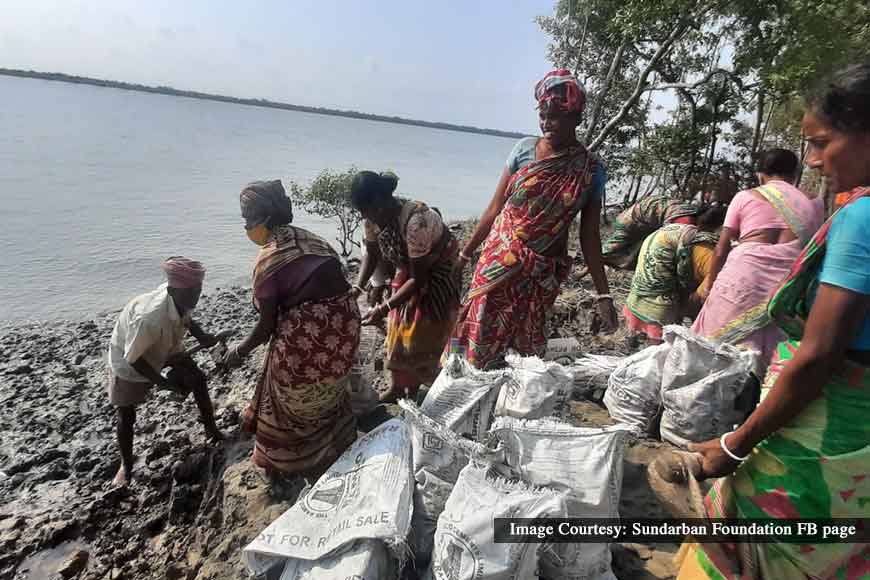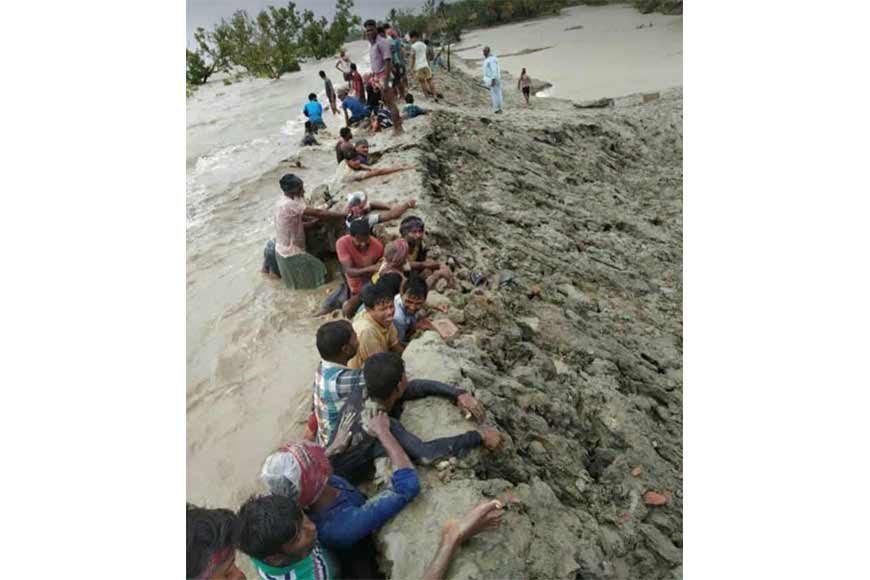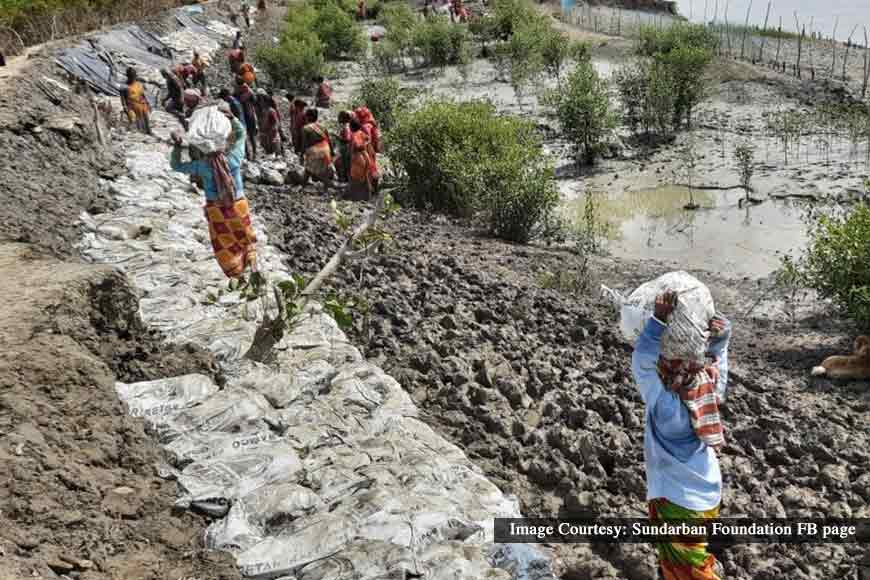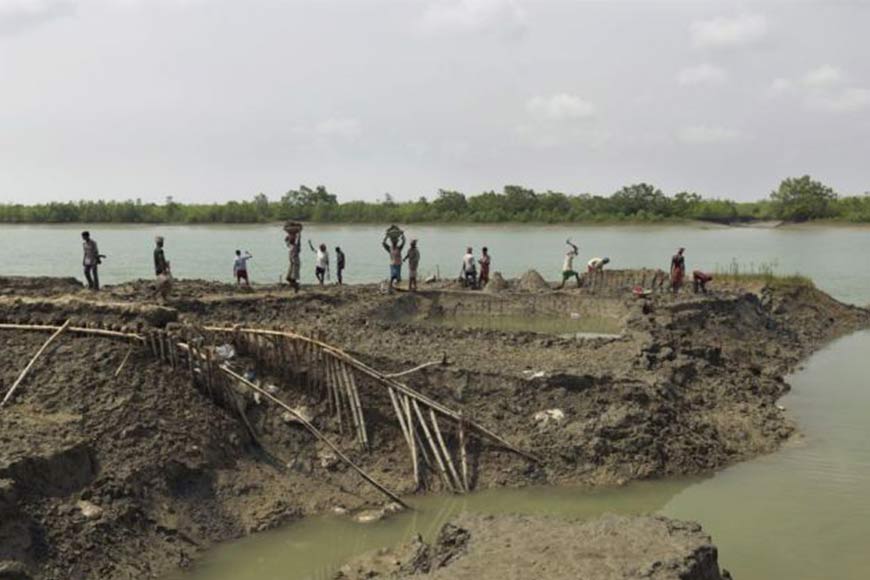Sundarbans ecosystem restoration on World Environment Day

“Where have the 50 million mangroves gone? Last year, there was big talk that they would be planted. How many have actually been planted?” that’s what West Bengal Chief Minister Mamata Banerjee had asked outright at an official review meeting recently. Banerjee herself inaugurated the ambitious Sundarbans mangrove plantation scheme in 2020, for she knew that only mangroves can help sustain the fragile delta of Sundarbans, the largest riverine delta of the world. Considering repeated cyclones battering West Bengal and adjoining states in the recent past, as a result of global warming, this is the only way to save the villages lining Sundarbans.
According to UNESCO the Sundarbans mangrove forest is one of the largest in the world with an area of 10,000 km2. But these very mangroves were destroyed over decades for various reasons. And thus Sundarbans lost its natural barrier against floods and cyclones. They were almost like what Himalayas is to India, protecting the land from severe dry storms of Tibet and Afghanistan. The loss of mangroves would have dramatic consequences for humans and nature alike and even thousands of commercial fish and shrimp farms of the area that provide livelihood to the locals will be lost forever.
 Not to let go
Not to let go
IIM Bangalore alumnus Biplab Das who runs an NGO Kishalay Foundation in Sundarbans for the past seven years says, “During the early 80’s the situation was tougher as Sundarbans lacked even the basic necessities, but gradually with the help of aids from different sources and organizations today the area at least has a hope and not suffering from extreme poverty. But with the advent of cyclones like Aila, Amphan and the recent Yaas which has devastated the villages, the people of Sundarbans understood that only way to save their lands is with the plantation of the mangrove forests.”
The entire Sundarban area is intersected by a complex network of tidal waterways, mudflats and small islands of salt tolerant mangrove forests and presents an excellent example of ongoing eco-logical processes. The area is known for its wide range of fauna including 260 bird species, the Bengal Tiger and other threatened species such as the estuarine crocodile, dolphins and the Indi-an python.
Meanwhile, Prasenjit Mandal a resident of Sundarbans and running Sundarban Foundation has a story of hope to share. “In the villages of Annpur, Patharpara and Rajatjubilee in Gosaba island, a group of women who have lost their husbands to tigers reside. These ‘Tiger Widows’ have come together to revive the Mangroves. They have created exclusive plantations of this mangrove species in vacant land outside their villages. Though the species is hard to nurture in the scenario of climate change, these women have already raised nearly 5,000 saplings and continue to grow more.” The locals are indeed proactive and during Yaas videos of how youths of Sundarbans guarding embankments with their own lives just to save the agricultural lands from getting inundated by saline water was seen. “We, the locals know we have to save our lands and home.”
A study says the ecologically fragile Sundarbans region in India and Bangladesh has lost 24.55 percent of mangroves (136.77 square km) due to erosion over the past three decades. There are several factors that have led to the degradation and loss of tree cover, not just of Sundari but of all trees, removed due to human development activities. Clearing of land for agriculture, timber and fuel wood collection, and pollution from other economic activities including aquaculture made Sundarbans terribly vulnerable to climate change.
 Restroring the banks
Restroring the banks
Environmentalist Soumendra Mohan Ghosh believes: “In order to stop environmental refugees flocking in the cities in the near future we need to create a protection wall of concrete after that we need to create a Green Belt by planting mangrove trees with 6 feet boundary wall and ten rows of 10 feet gap distance which will help us save the destruction by preserving flora and fauna in the Sundarbans.” He thinks this is the only permanent solution possible for Sundarbans that will anyway have to face the brunt of climate change quite often.
 The work in progress
The work in progress
West Bengal government has opened the Sundarban Development Board to look after the department of Sundarban Affairs through which they can implement developmental activities. The department promotes social, economic and cultural advancement of people residing in the Sundarban areas in the districts of North & South 24 Parganas, coordinates development schemes and projects in the area, provides infrastructural facilities through improvement of rural communication, water resources, preservation of ecological balance, provides facilities for the development of the agriculture including minor irrigation and drainage system. On this World Environment Day hope all the players in the Sundarban region pledges to save the largest delta of the world from vanishing from the face of the Earth.











